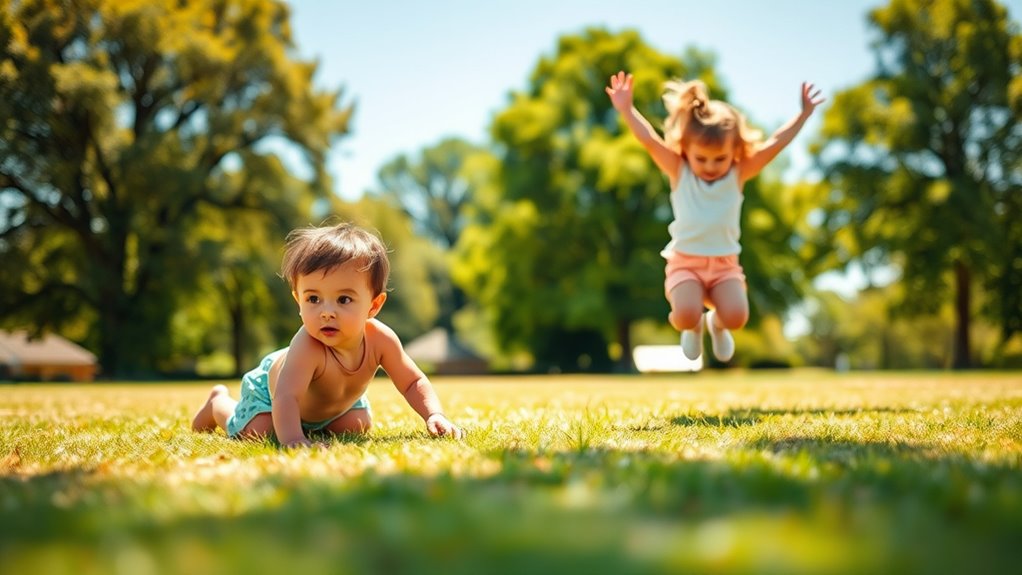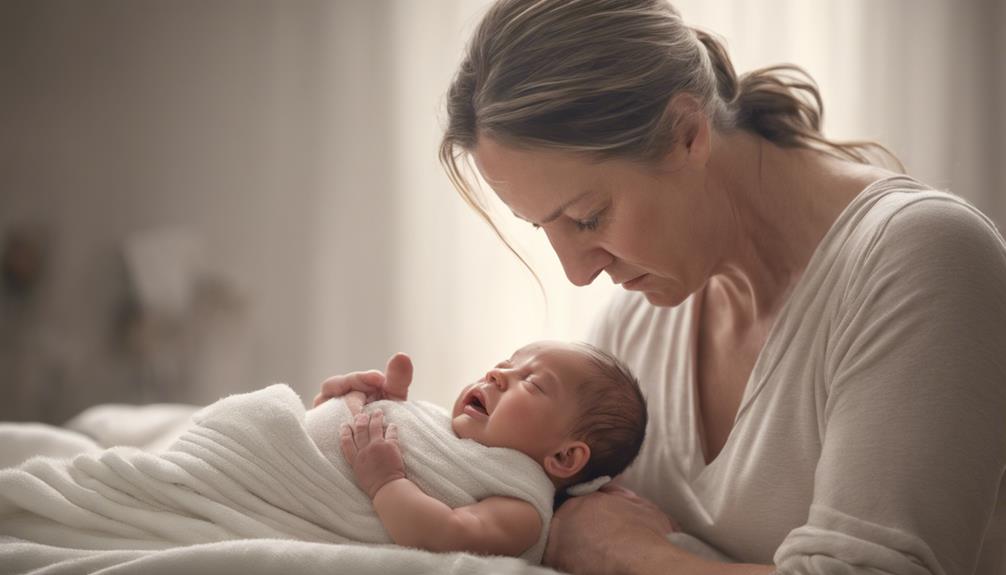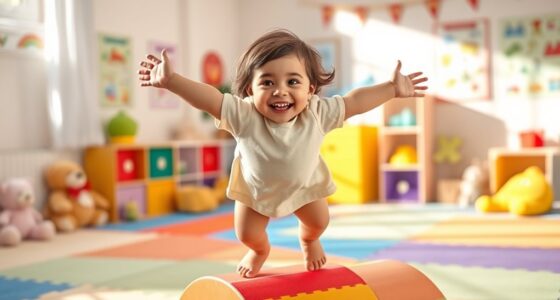As a parent or caregiver, you’ll see your child’s gross motor skills grow from crawling to jumping as they gain strength, balance, and coordination. Crawling helps build core muscles and curiosity, setting the stage for walking. As stability improves, your child can progress to running, jumping, and climbing, boosting independence and confidence. Creating a safe environment and encouraging active play will support this development. Keep exploring to discover more ways to foster these important milestones.
Key Takeaways
- Crawling develops core strength and coordination, laying the foundation for later skills like standing and jumping.
- Mastering crawling enhances spatial awareness, which supports safe transition to walking and jumping.
- Progressing from crawling to walking improves balance and stability essential for jumping activities.
- Jumping requires leg strength and coordination built through earlier gross motor milestones like crawling and walking.
- Providing a safe environment with appropriate surfaces encourages practice and confidence in advancing from crawling to jumping.

Gross motor skills are essential physical abilities that involve large muscle movements, such as walking, running, jumping, and balancing. As you watch a child develop these skills, you’ll notice how each milestone builds upon the last, shaping their confidence and independence. From crawling to jumping, each stage plays a critical role in their overall growth, and understanding these motor skill milestones helps you support their progress safely. When it comes to playground safety, knowing what skills children are working toward allows you to create an environment that encourages development while minimizing risks.
At the early stages, crawling is often the first big milestone. It’s a complex skill that strengthens core muscles and improves coordination. As your child masters crawling, they begin to explore their surroundings more confidently. This curiosity sets the stage for walking, which is a significant leap in motor development. Walking not only boosts their independence but also opens up new avenues for play and social interaction. Ensuring the playground surface is safe—like rubber mats or sand—becomes essential at this point because falling is inevitable as they learn to balance and take their first steps. A safe play environment supports their motor skill milestones, allowing them to practice without fear of injury.
As children grow more stable on their feet, they start running, jumping, and climbing. Jumping, in particular, is a fun and important milestone because it develops leg strength, coordination, and timing. It also encourages confidence as they learn to land safely and control their movements. When supervising playground activities, look for equipment that challenges their abilities while ensuring safety. For example, low slides, sturdy climbing structures, and soft landing zones help children practice these skills confidently and with reduced risk. It’s during this phase that skill development becomes more dynamic, and your role in providing a safe environment becomes even more indispensable. Additionally, incorporating appropriate safety equipment can further reduce the risk of injury during these active phases.
Frequently Asked Questions
When Should I Be Concerned About My Child’s Gross Motor Development?
If you’re worried about your child’s gross motor development, trust your instincts and watch for developmental delays. Most kids crawl by 9 months and walk by 18 months, but every child develops at their own pace. If your child isn’t meeting these milestones or shows signs like unsteady movement or difficulty with coordination, you should consult a pediatrician. Addressing parental concerns early helps ensure your child’s healthy growth.
How Can I Encourage My Child to Crawl and Explore More?
Remember, “a journey of a thousand miles begins with a single step.” Encourage your child by making tummy time fun and engaging, using toys and praise to motivate them. Create a safe space for exploration, allowing them to crawl freely without worry. Get down on their level, cheer them on, and celebrate every small milestone. Your active involvement boosts confidence and curiosity, helping them explore and develop their gross motor skills naturally.
What Are Common Milestones Between Crawling and Jumping?
Between crawling and jumping, your child typically reaches milestones like improved hand-eye coordination and better balance. As they crawl, they develop core strength and coordination, which set the stage for jumping. To support this, encourage balance exercises and activities that challenge their coordination. You’ll notice them gaining confidence and control, preparing them for the next big step—jumping, which combines strength, coordination, and balance in exciting ways.
Are There Activities That Can Help Improve My Child’s Gross Motor Skills?
Think of activities that boost gross motor skills like planting seeds for growth. You can encourage your child with sensory play, like jumping in puddles or playing with textured toys, and outdoor activities like running or climbing. These activities are like fuel for their development, helping strengthen muscles and coordination. Just verify they’re fun and safe, and you’ll see progress as they explore and move confidently.
How Does Gross Motor Development Vary Between Children?
You’ll notice that gross motor development varies widely among children, influenced by their sensory integration and physical activity levels. Some kids may quickly master skills like jumping, while others need more time and practice. Providing diverse activities helps support their growth. Encouraging regular physical activity and sensory play can boost coordination and strength, helping your child develop at their unique pace and build confidence in their abilities.
Conclusion
As you watch your child progress from crawling to jumping, it’s like witnessing a tiny seed blossom into a vibrant flower. Each skill builds on the last, helping your little one gain confidence and strength. Remember, every step counts, and your encouragement fuels their growth. Celebrate these milestones, knowing you’re guiding them through a remarkable journey of movement and discovery. Soon enough, they’ll be leaping into new adventures with joy and excitement.









